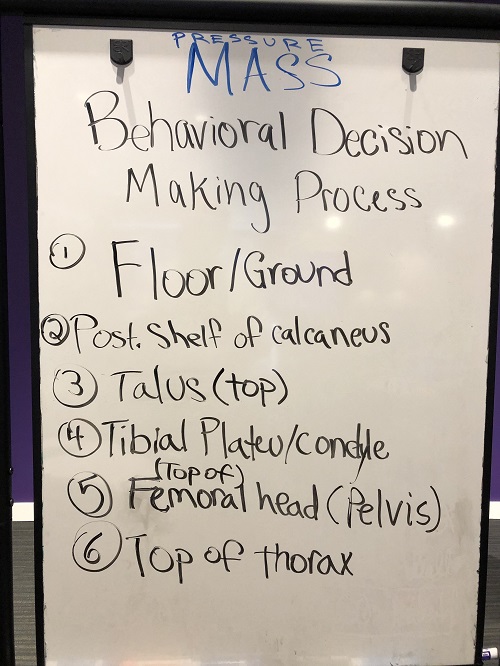For many of us who have taken PRI courses over the years, Lincoln, Nebraska, often becomes a home-away-from-home. This has been particularly true in the last two years with the inception of PRI live-stream courses. It has been such a blessing for PRI to reach so many people via live-stream. In total, we had 78 people attend Impingement and Instability, with 20 of those having attended the course in previous years. However, only 5 individuals had attended the new and upgraded version of I&I before this weekend. Having six people live and in person was such a gift. It was an honor to have 11 PRC’s and PRT’s in the audience as well.

This course is a clinician’s course, and we are able to make a lot of connections and links between several PRI courses in one weekend. Yes, this is a dense course with a lot of great information. The advantage of the live-stream is that all the attendees received the recording of the course for two weeks to listen to the material again. The ironic part of the "new" version of I&I is that a lot of the material is unchanged; the context and neurological links between the floor on the ground and the "floor" under the scapulae are significantly changed. This allows the attendee to further appreciate the "why" and "how" behind non-manual activity application and selection.

This course is dripping with neurology and is a gateway for the attendee to attend the PRI Forward Locomotion Movement, Cranial Resolution, Occlusal Cervical Restoration, and the new Voice Box course. We build off the three PRI primary courses to delve into how to apply those basic concepts using a higher level of decision making based on a neurological sensory framework. Hopefully, we were able to provide the attendees with that appreciation and help prepare them for future PRI courses.
My thanks to RJ Hruska for orchestrating the entire weekend. He was very helpful to me, and made my job much easier. We got so many great questions over the weekend, and we were able to answer most, if not all, of them. And having six people live in the building provided an additional layer of questions and feedback. My thanks to Benjamin Sandman for his help with our calcaneal sensorium demonstration. He said it perfect when he said he was surprised at how much better he could sense the ground under his L calcaneus even after the demonstration was over.
It was truly and honor to have attendees from 14 countries. It is amazing to think that this technology exists, and I am very thankful that fellow movement specialists were willing to spend time with us, even from the other side of the world. Even though most, if not all, of the 72 of the live-stream attendees were in their homes, it was comfortable for me as well to be in my home-away-from-home and spend some quality I&I time with so many like-minded peers.


